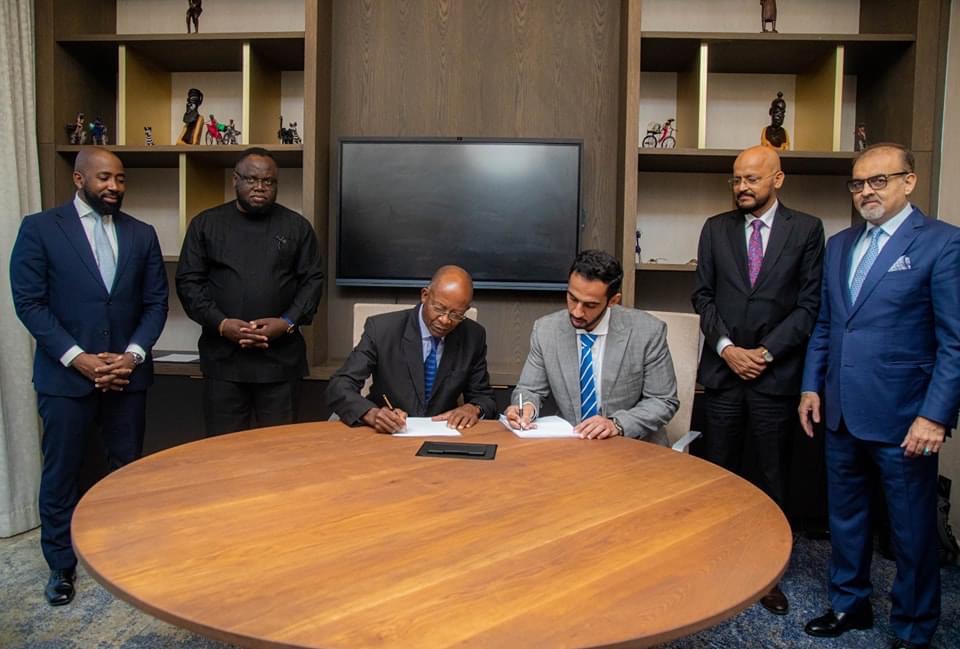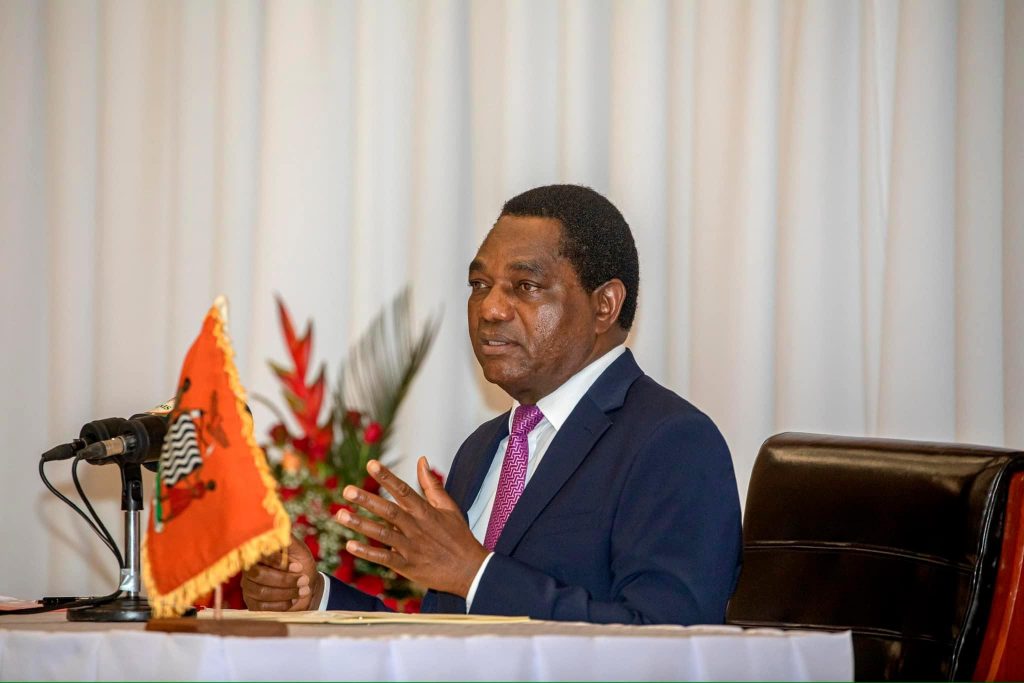Africa’s second-largest copper producer, Zambia is on a mining sector revival path as it seeks to reclaim its continental position from the Democratic Republic of Congo (DRC) through strategic partnerships. Despite mining exports hovering below 70,000 metric tons monthly with an expectation of a 14 year low of production in 2023, this period is recognized as an investment phase for most mining entities that are gearing up for the post 2025 mining boom fueled by a surge in global decarbonization to counter climate risks through usage of renewable energy and the electric car battery.
READ ALSO: Zambia’s Mining Investment Vehicle ZCCM-IH Plc engages SA’s Rothschild & Co for Mopani Mine Review
READ ALSO: Zambia’s mining industry in 2023
The red metal producer on Friday 22 December signed the Mopani Copper Mines (MCM) deal, post Glencore Corporation’s exit, after successfully identifying a strategic equity partner, International Resources Holding RSC Limited of Abu Dhabi for a contract value of $1.1 billion. The deal structure according to a stock exchange news IRH will invest $1.1 billion into MCM’s Project Development Plan to provide working capital and restructure certain existing Glencore liabilities set out through a $620 million in equity capital for a 51% stake, $300 million in shareholder loan by way of novation of part of the outstanding debt and $100 million for settlement of Glencore’s procured letters of credit.

President Hakainde Hichilema in a state of the nation address on the 22 December highlighted the signed $1.1 billion Mopani deal, split between debt and equity as a landmark development for the copper producer with a decent portion of shareholding of 49%. This agreement, alongside restructures in Konkola Copper Mines and Luanshya Copper Mines, marks a pivotal shift in ownership, with the government holding significant stake aimed to maximize benefits from Zambia’s mineral resources.
Speaking in a state of the nation address, President Hakainde Hichilema said, “the Mopani deal has been signed with a cover value of $1.1 billion whose split into both debt and equity. It is Mopani, Konkola Copper Mines and shaft 28 of Luanshya Copper Mines done which are bringing back the Copperbelt where it should be.” This is the first transaction since 1990 with properly negotiated shareholding where government holds 49% and the equity partner at 51%, Hichilema said. Zambia has for years been criticized for low shareholding in mines that arguably have not allowed for maximize of benefits of minerals mined in its backyard.

Beyond just mining, the deal also emphasizes commodity trading, acknowledging that major profits often stem from trading rather than direct mining operations. References demonstrate how companies like Glencore derive more significant revenues from trading activities than mining.
The head of state announced that Zambia will now engage in commodities trading as was done in the 80’s where the red metal producer was involved in metal marketing through a vehicle called MEMACO.
“We will mine and commodity trade through a joint venture (JV) for value addition purposes to process our minerals,” Hichilema said. This he said acknowledging the significance of trading in enhancing profits.
MOPANI A LITTLE TRIP DOWN MEMORY LANE
Before the exit of Glencore when metal prices plummeted, the mine had invested $324 million in a a business review in a project dubbed the synclinorium shafting sunk to access deeper parts of the mine and assist with improvements in mining efficiency. This project was initiated in 2012-2013 period that saw lay off of miners to manage costs. The synclinorium project was improve the mine’s operations to allow for higher contribution to fixed costs and profits. With Glencores exit at a time red metal prices fell, the mine was in need of working capital to actualize fully the project benefits in the range of $300 million which then the shareholder ZCCM -Investment Holdings needed to inject. With the equity partnership characterized by cash injections it is expected that the mine will release a new lease of life to propel mining to higher production.
Following Mopani Copper Mines PLC’s sinking and equipping of the synclinorium shaft, the old Nkana concentrator in operation since 1931 needed upgrading to a new and modern uprated facility to handle the increased production volume from the new shaft. The synclinorium concentrator is a new 4.2 Mtpa state-of-the-art automated concentrating facility in commissioning stage since January 2022 at a cost of $220m. The plant would improved concentrate grades, improved copper recoveries and concentrator capacity.
MINING HURDLES AND RESURGENCE EFFORTS
The Southern African nation has faced significant mining hurdles resulting in a decline in production output which paved the way for the DRC to surpass Zambia is currently producing north of 2 million metric tons. Mining impasses such as that between Vedanta Resources and ZCCM-Investment Holdings and the exit of Glencore Corporation has impacted production. However, operationalizing mines could mitigate business risks in energy investment, as operational mines are more likely to manage energy bills, which could stress the need for rapid investment in energy infrastructure.
SURGE IN EXPLORATION AND INVESTMENTS
Notable mining projects, including the AI exploration backed Ming’omba copper project and First Qunatum’s African Nickel project, signify a surge in exploration and investor interest. Pledges from China Non Ferrous Minerals (CNMC) of $1.2 billion in shaft 28 and Vedanta’s commitment of $1.3 billion over 5 years and Barricks $2 billion signal confidence in Zambia’s mining potential.
ENERGY CHALLENGES AND ECONOMIC IMPACT
Energy, significantly reliant on mining, constitutes 55% of Zambia’s grid. Environmental challenges, like reduced precipitation leading to plummeting dam levels, necessitate substantial investments in power generation to meet growing demand. Increased mining activity could materialize the $7.9 billion in investment pledges in the renewable energy sector from China, United Arab Emirates, and the United Kingdom, impacting the grid with 5.9GWh of new renewable energy.
COPPER ON ‘STEROIDS’ IN MEDIUM TERM AND FX FLOWS
Mining developments significantly influence Zambia’s economy, with foreign exchange flows accounting for close to 70%. A flourishing export market supports a stable exchange rate, albeit with constraints due to lower copper production. However, the post-2025 outlook for copper appears robust, with expected prices ranging from $11,500 to $15,000 per metric ton on the London Metal Exchange. Once larger mines are operationalized, healthier foreign exchange flows could offset the pressures of higher energy and fertilizer prices on the kwacha.
The MCM and KCM deal do have capacity to add close to 550,000 metric tons of copper to national production which potential could see the Southern African nation soar to 1.3 million metric tons. Zambia has targeted to ramp production to 3 million metric tons in the next 7 years supported by aggressive explorations and resolution of current impasses in the sector.
Despite the 2024 outlook marred by debt, high global interest rates, and a global slowdown, it sets the stage for a potentially robust 2025 recovery.
The Kwacha Arbitrageur

